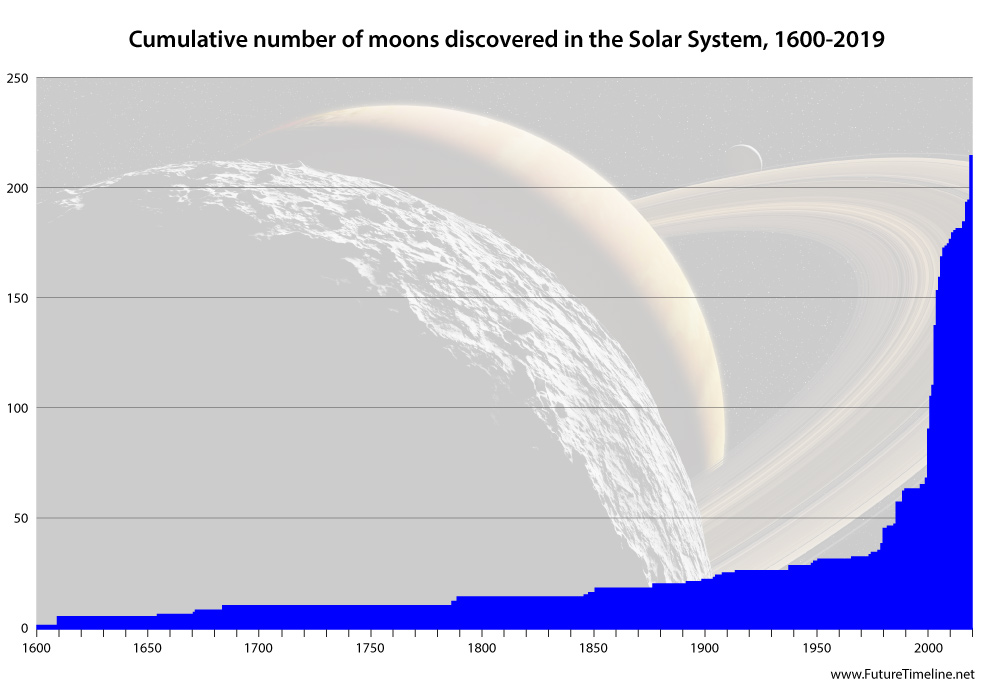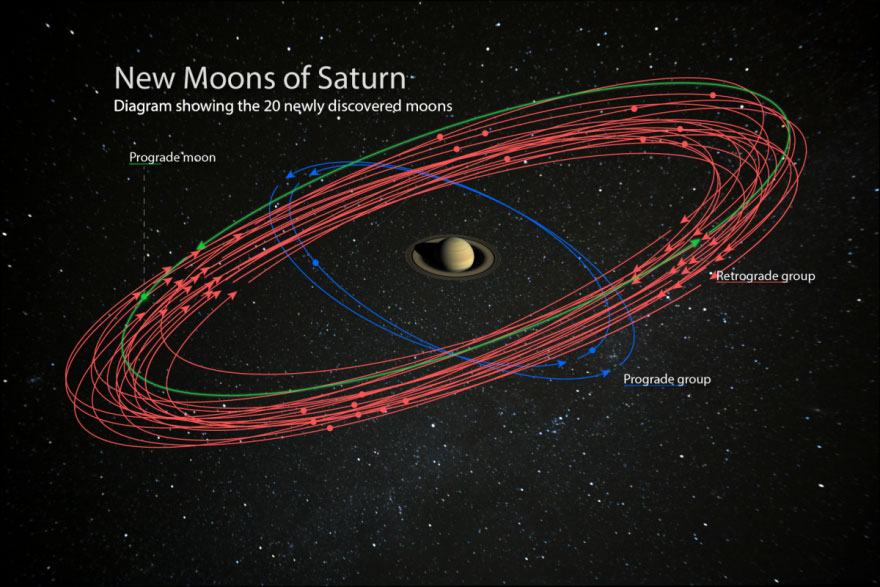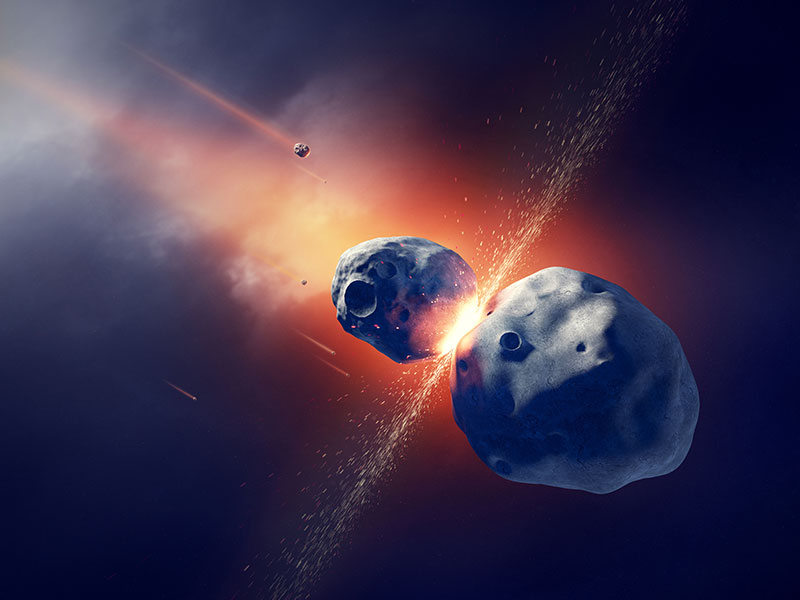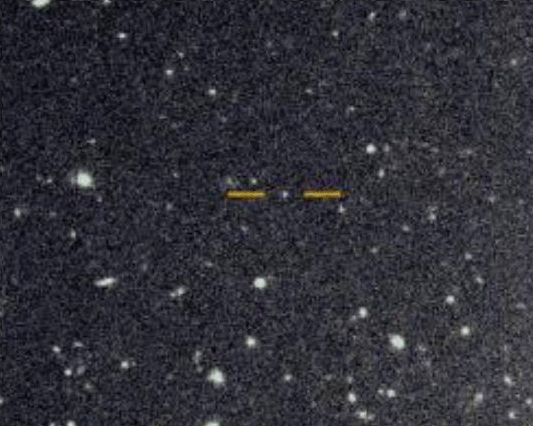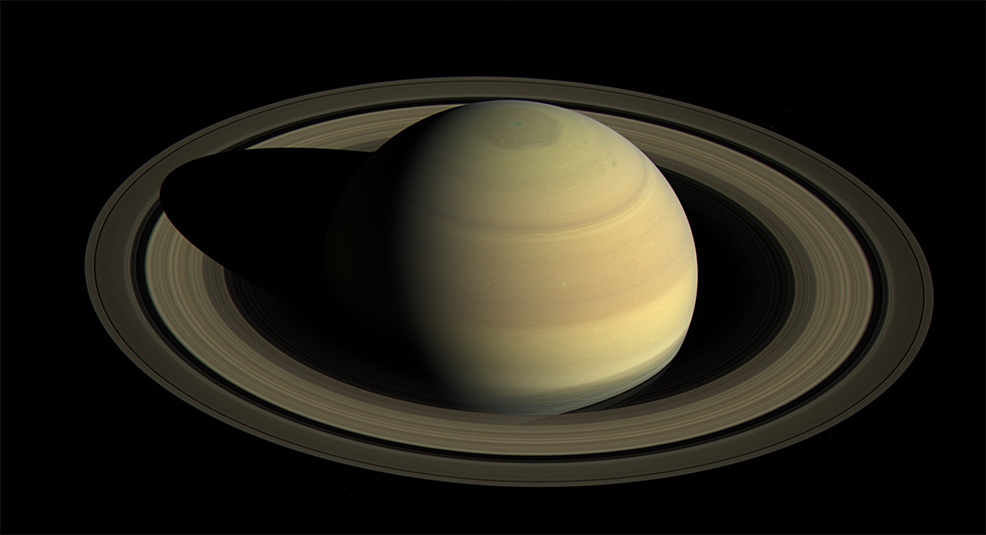
9th October 2019 20 new moons of Saturn Astronomers report the discovery of 20 new natural satellites of Saturn – taking the planet's known number to 82, surpassing Jupiter, and pushing the total count for the Solar System above 200.
A team of researchers, led by Scott Sheppard of the Carnegie Institution for Science, has found 20 new moons orbiting Saturn. This brings the gas giant's total number of confirmed moons to 82, surpassing Jupiter, which has 79. The discovery was announced on Monday by the International Astronomical Union's Minor Planet Center. The newly discovered moons are relatively tiny – each is about five kilometres, or three miles, in diameter. Seventeen of them orbit the planet backwards, or in a retrograde direction, meaning their movement is opposite of the planet's rotation around its axis. The other three moons orbit in prograde, the same direction as Saturn rotates. Two of the prograde moons are closer to the planet, taking about two years to travel once around Saturn. The more-distant retrograde moons and one of the prograde moons each take more than three years to complete an orbit.
“Studying the orbits of these moons can reveal their origins, as well as information about the conditions surrounding Saturn at the time of its formation,” Sheppard explained. The outer moons of Saturn appear to be grouped into three different clusters in terms of the angles at which they orbit. Two of the new prograde moons fit into a group with inclinations of about 46° called the Inuit group (named after Inuit mythology). These moons may have once comprised a larger moon that was broken apart in the distant past. Likewise, the newly announced retrograde moons have similar inclinations to other previously known retrograde Saturnian moons, indicating that they are also likely fragments from a once-larger parent moon that was broken apart. These retrograde moons are in the Norse group, with names coming from Norse mythology. One of the newly discovered retrograde moons is the farthest known moon around Saturn. “This kind of grouping of outer moons is also seen around Jupiter – indicating violent collisions occurred between moons in the Saturnian system or with outside objects such as passing asteroids or comets,” explained Sheppard.
The other newly found prograde moon has an inclination near 36 degrees, which is similar to the other known grouping of inner prograde moons around Saturn called the Gallic group. But this new moon orbits much farther away from Saturn than any of the other prograde moons, indicating it might have been pulled outwards over time, or might not be associated with the more inner grouping of prograde moons. If a significant amount of gas or dust were present when a larger moon broke apart and created these clusters of smaller moon fragments, there would have been strong frictional interactions between the smaller moons and the gas and dust, causing them to spiral into the planet. “In the Solar System’s youth, the Sun was surrounded by a rotating disk of gas and dust from which the planets were born. It is believed that a similar gas-and-dust disk surrounded Saturn during its formation,” Sheppard said. “The fact that these newly discovered moons were able to continue orbiting Saturn after their parent moons broke apart indicates that these collisions occurred after the planet-formation process was mostly complete and the disks were no longer a factor.”
The new moons were discovered using the Subaru telescope atop Mauna Kea in Hawaii. Last year, Sheppard and his team discovered 12 new moons orbiting the Solar System's largest planet, Jupiter. The Carnegie Institution hosted an online contest to name five of them and is now doing the same for Saturn's new moons. "Using some of the largest telescopes in the world, we are now completing the inventory of small moons around the giant planets,” says Sheppard. "They play a crucial role in helping us determine how our Solar System’s planets formed and evolved.” “I was so thrilled with the amount of public engagement over the Jupiter moon-naming contest that we’ve decided to do another one to name these newly discovered Saturnian moons,” Sheppard said. “This time, the moons must be named after giants from Norse, Gallic, or Inuit mythology.” To enter the contest, tweet your suggested moon name to @SaturnLunacy and explain why you picked it. Photos, artwork, and videos are strongly encouraged. The closing date for entries is 6th December 2019, and you must include the hashtag #NameSaturnsMoons
Comments »
If you enjoyed this article, please consider sharing it:
|
